-
Are you in Other? If not, please update your location below.
-
Other
- Services
- Class Actions
- No Win No Fee
- Our Firm
- Resources
- Contact Us
Finding out that you or a loved one has a serious illness or injury is devastating. The news can be even more distressing if a medical practitioner originally made the wrong diagnosis — leaving you wondering whether a tragedy could have been stopped in time if doctors had only recognised the symptoms.
While it certainly isn’t enough to make up for the physical and emotional suffering of misdiagnosis-related injury, it’s important to know that compensation options are available. The medical malpractice experts at Gerard Malouf & Partners can help.
Medical misdiagnosis occurs if a patient is given incorrect information about an issue they are having or are told that they don’t have a problem at all. This can result in incorrect or delayed treatment that lengthens or worsens the severity of an illness or injury and can even result in premature death.
Despite the hard work of most medical practitioners, medical misdiagnosis is very common. According to a Sept. 2020 perspective piece in the Medical Journal of Australia, there are about 140,000 diagnostic cases in Australia alone each year — with 21,000 resulting in “serious harm” and between 2,000 and 4,000 being fatal. Unfortunately, the study also estimated that as many as 80% of these errors were preventable.
It’s important to note that not every medical misdiagnosis case will result in successful litigation. Doctors, nurses and other members of the medical community have to handle complex, life-and-death situations every day and, sadly, can make mistakes. As a result, protections are in place to shield them from some litigation.
A medical professional or hospital system is only liable for a misdiagnosis if it caused serious injury and was the result of medical negligence or malpractice. Negligence is a failure to exercise the care that another in the same position would prudently exercise. The harm caused by negligence is considered to be due to carelessness, rather than a specific intent or determination to cause harm.
When committed by health professionals, negligence is a form of medical malpractice. Any time they are on the job, a medical practitioner has an assumed duty of care to their patients. If a doctor fails to provide what is accepted as the minimum standard of care and subsequently causes harm to the plaintiff, it is considered malpractice.
Overall, to win a favourable judgment in a misdiagnosis claim, you must be able to prove four elements:
Duty:
It must be clearly shown the defendant had a duty or an obligation. In a medical malpractice situation, the attending medical professionals have a moral duty of care that is a part of their profession.
Breach:
It must be proven that the defendant fell short of the expectations of their duty.
Causation: A causal link must be made between the harm suffered and the breach of duty.
Damages:
The damages being sought must be directly related to the harm caused.
Ultimately, a medical practitioner who fails to follow established procedures or misses obvious signs of a serious disease could be considered negligent. If the illness has become terminal due to this negligence, the plaintiff could receive significant compensation for lost income, medical expenses, and pain and suffering.
Of the four criteria listed above, causation, or proof that medical negligence resulted in the personal injuries outlined in the claim, is often the hardest to prove. Drawing a direct link between the condition of you or a loved one and the treatment (or lack thereof) you received requires an extensive amount of evidence that may not exist.
In one recent case, for example, a man died of skin cancer that his GP had misdiagnosed as a plantar wart on his foot. After his death, his wife pursued compensation. However, because the plaintiff’s legal team were unable to prove that the cancer wasn’t already terminal when the man first visited his doctor, the court ultimately ruled in favour of the doctor. The case highlights some of the challenges in pursuing medical negligence compensation.
To increase the likelihood of a favourable outcome, it’s important to gather as much information as possible throughout your diagnosis and treatment process. Make sure you’re communicating with your GP or other attending medical process throughout this time — including describing all of your symptoms and concerns. This will ensure the defendant can’t claim they were making a diagnosis off of incomplete information after the fact.
Another key way courts establish medical malpractice and causation is by relying on expert testimony. If effective, this testimony will make clear how the medical professional involved in the case fell short of the expected norms of the medical field and how this breach of duty of care correlated with the victim’s plight. An established medical malpractice solicitor will usually be able to draw from a long list of expert witnesses to assist the case.
If you feel that you have enough information to prove medical malpractice, your next step is to file a lawsuit. In most cases, you’ll actually be suing the hospital system that cared for you or your loved one, rather than an individual practitioner. It’s important to remember that you’ll probably only have a limited window of time to make a claim for medical malpractice after your initial diagnosis.
The statute of limitations varies from state to state. New South Wales, for example, typically places a limitation of three years to make a claim, although exceptions are sometimes made. Once you place your claim, however, litigation can take as long as you need. Because of the complexity of these cases, a medical negligence claim can take several months or even years, depending on the specific circumstances.
In your claim, you’ll file for specific damages or areas of compensation that you’d like the defendant to cover. These can include both immediate and long-term medical care related to your injuries, compensation for lost wages or superannuation, and extra payment for emotional suffering. The amount of compensation available in a medical malpractice case will vary based on the severity of the injury, the long-term impact and the amount you claim.
From there, you’ll either enter into a settlement negotiation with the hospital or proceed to trial. Most courts will request that the parties try to work out a settlement in mediation before they hear a case. While a settlement may result in a lower level of compensation, it can also save you from having to pay extensive legal fees, and it offers a level of certainty that a trial can’t offer. If, however, negotiations break down, going before a court is your next step.
Ultimately, the best step you can take to secure the compensation you deserve in a misdiagnosis case is to enlist the assistance of a skilled medical negligence lawyer. A solicitor can review the details of your situation and help determine if you have a case for negligence.
If you didn’t keep a record of the necessary information at the time of the misdiagnosis (a common occurrence, with so many other stressors occurring), your lawyer can assist with the gathering of evidence and presentation of your case — either in a settlement negotiation or in court.
Do you have further questions about negligence claims and misdiagnoses? Please get in touch with Gerard Malouf & Partners Compensation Lawyers for more information or download our guide to maximum justice.
We are small enough to care intimately for their clients and large enough to have the financial, medical and expert resources clients need to receive maximum compensation.
Our solicitors work on a “no win, no fee” basis — so you can be sure your representatives are working hard to achieve the maximum payout possible. Overall, each of our lawyers is dedicated to the goal of achieving “maximum justice in the minimum time.”

In the spirit of reconciliation GMP Law acknowledges the Traditional Custodians of country throughout Australia and their connections to land, sea, and community. We pay our respects to their Elders past, present, and emerging, and extend that respect to all Aboriginal and Torres Strait Islander peoples today.

Your location is currently:
Please wait while you are redirected to the right page...